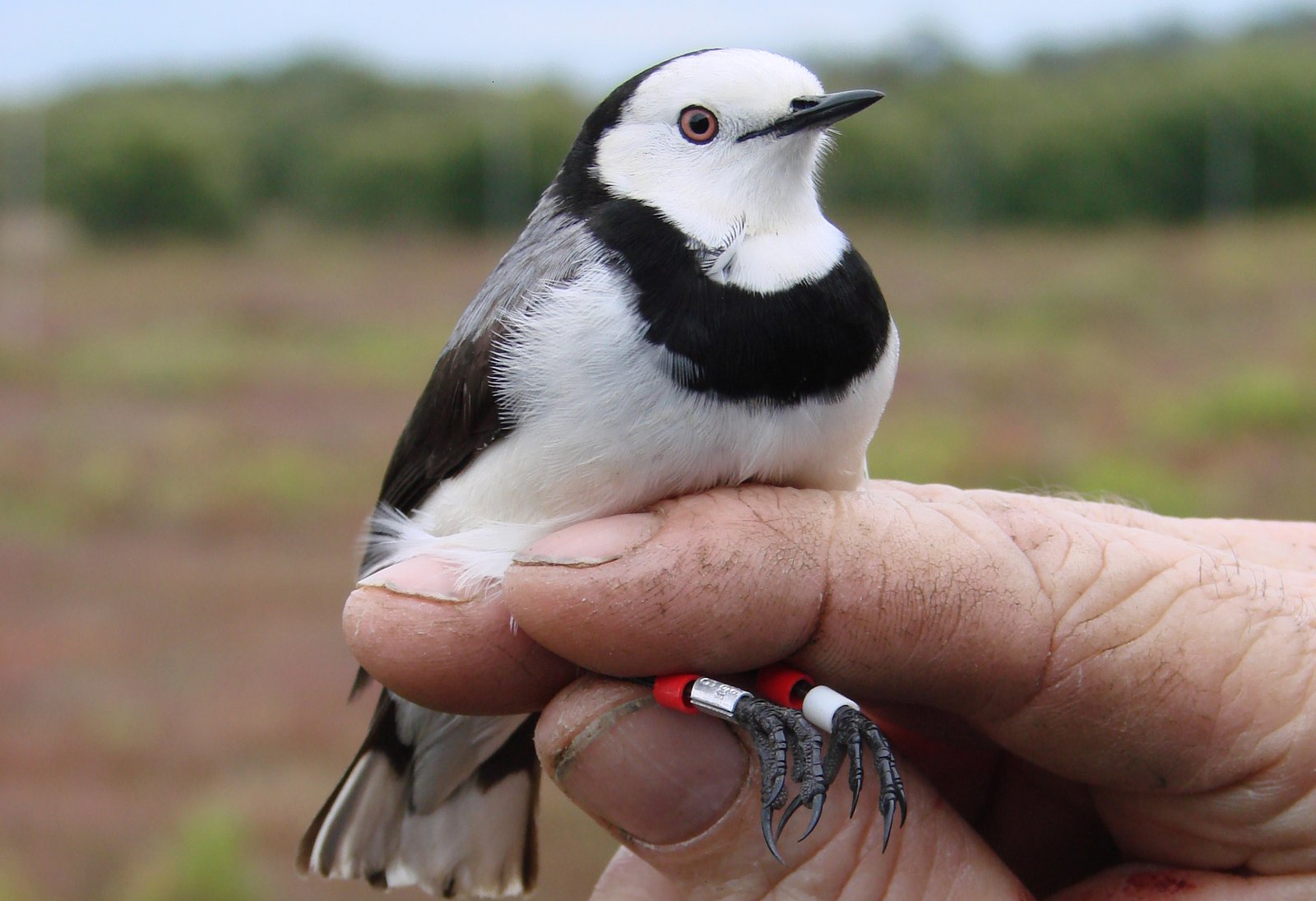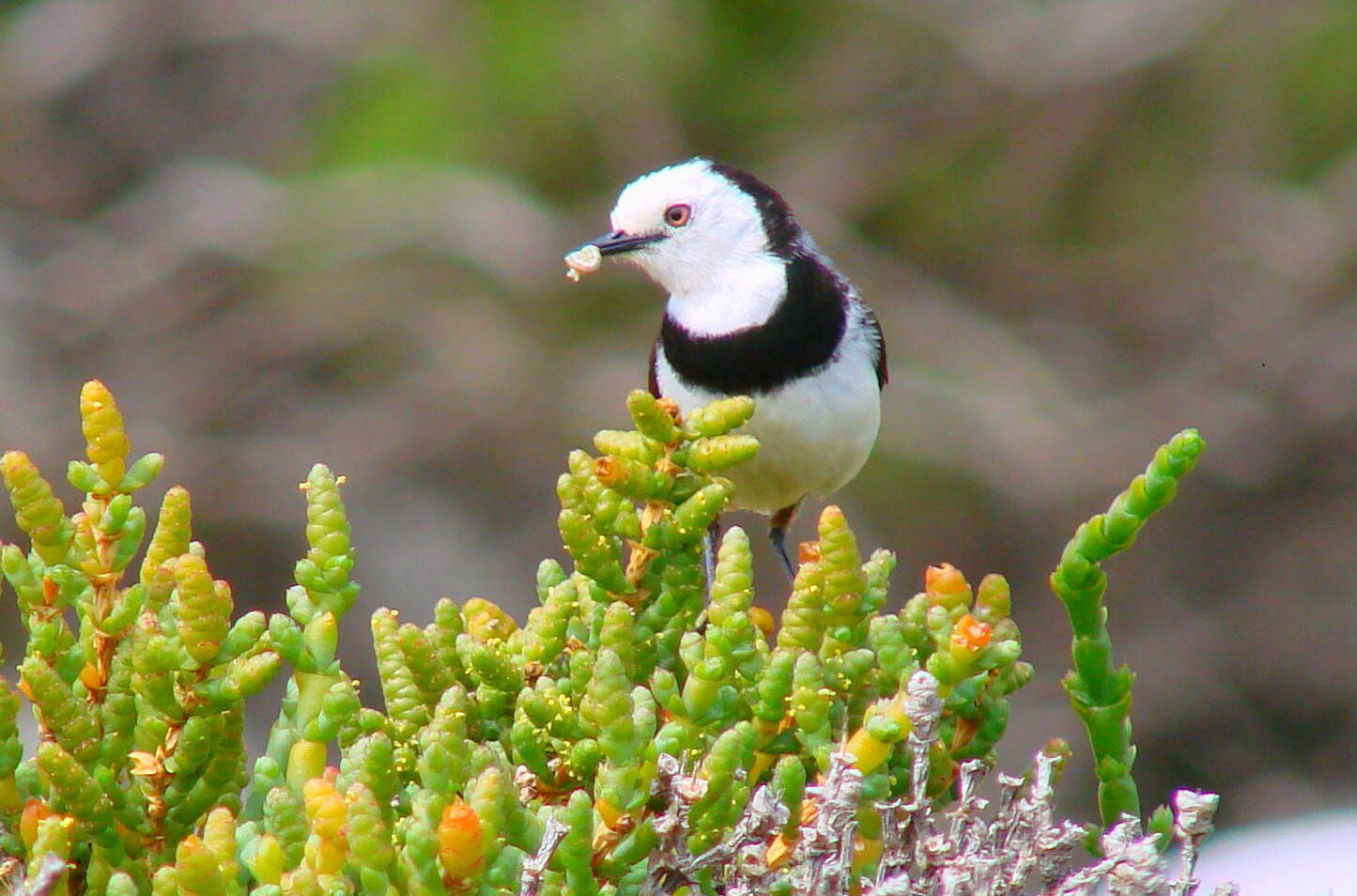White-fronted Chat
Although they are classified as honeyeaters, White-fronted Chats do not feed on nectar. Instead, they run along the ground feeding on insects. However, they have the same brush-tipped tongues as other members of their family.
Identification
Male White-fronted Chats have a white face, breast and belly, dissected by a distinctive black band across the breast that extends around to the back of the head. Females have similar markings but they are gradations of grey-brown, rather than black-white, and the breast band is narrower. Immatures are similar to the female, but the breast band is very faint or missing.

© Australian Museum
Habitat
The White-fronted Chat lives in salt marsh and other damp, open areas with low vegetation such as swampy farmland and roadside verges. Sometimes occurs on beaches and the edges of lakes.
Distribution
The White-fronted Chat occurs across southern Australia (including Tasmania) from Shark Bay in Western Australia around to the Queensland/New South Wales border.
Seasonality
Mostly sedentary, although there may be some nomadic movements, particularly in the drier areas of its range.
Feeding and diet
White-fronted Chats often forage in flocks of around 20 birds that congregate in areas where there are temporary outbreaks of insects. They run along the ground, picking up small insects, usually less than 5 mm long. Midges, kelp-flies, plant bugs and beetles are popular food items.
Communication
Short 'tangs' sounding like a plucked rubber band.
Breeding behaviours
White-fronted Chat males and females form pairs towards the end of winter, while they feed in flocks. They sometimes nest in loose colonies, with nests as close as 5 m to each other. Males defend a small nest-site territory, but not necessarily for a whole breeding season. Second clutches will often be laid in locations that are different from earlier nests. Males follow their mates closely, during their fertile period, watching them from prominent perches, and chasing any males that may approach them. Only the female builds the nest (guarded closely by the male at all times), but both sexes take equal roles in incubation and feeding of the young.
- Breeding Season: August to January.

© Australian Museum
Economic impacts
One of the earliest records of White-fronted Chats in the Australian Museum's collection is a study skin that was collected in June 1868 from Homebush in Sydney. The species originally had a wide distribution in the Sydney region, with records scattered across about 54 localities. However, their Sydney distribution is now restricted to two small populations living in wetlands in Botany Bay and the Parramatta River. The latter population will almost certainly become extinct within the next few years. Draining and filling of swamps for housing has eliminated much of the habitat of this species in areas of high human population density. The species remains common in farmland and coastal wetlands.
White-fronted Chats are not found in urban habitats.
References
- Morcombe, M. 2000. Field guide to Australian Birds. Steve Parish Publishing.
- Major R.E. 1991. Flocking and feeding in the white-fronted chat Ephthianura albifrons: the relationship between diet, food availability and patch selection. Australian Journal of Ecology 16: 395-407
- Major R.E. 1991. Breeding biology of the white-fronted chat Ephthianura albifronsin a saltmarsh near Melbourne. Emu 91: 236-249
- Major R.E. 1992. Mate guarding in a population of White-fronted Chats Ephthianura albifrons Jardine & Selby (Passeriformes: Ephthianuridae): a response to group living and a male-skewed sex ratio? Australian Journal of Zoology. 40: 401-409.
Further reading
- Listen to a Radio National interview with Dr Richard Major.


